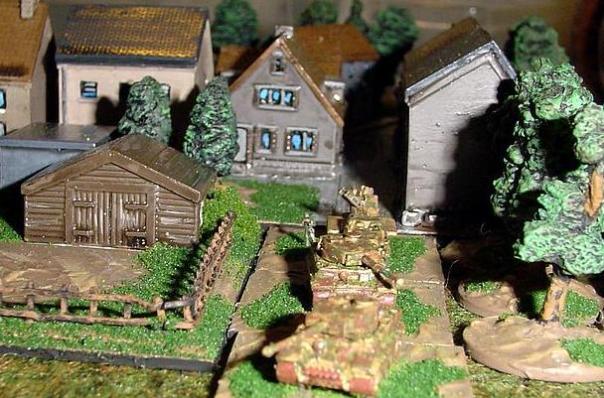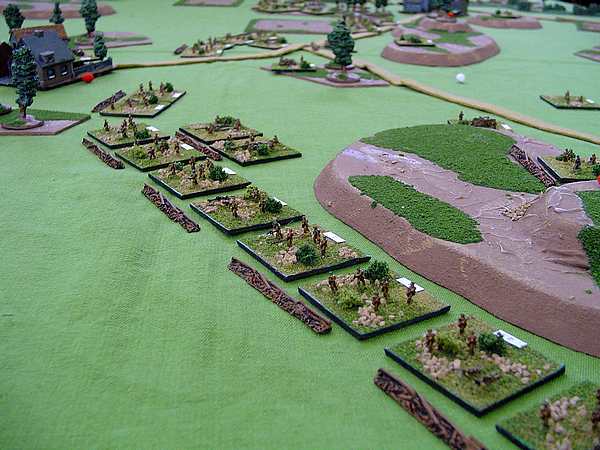Spearhead is a miniatures rule set written by Arty Conliffe with the concept that they are designed for wargaming divisional level engagements during World War II. To allow such a high level of game to be played a number of design perimeters have been selected, which compared to most World War II rules systems are unique. However, before examining some of these mechanics we should first define the core troop and ground scales, the building blocks of the units and terrain that together, model the fighting on the tabletop.
Spearhead uses a troop scale where each stand generally represents a platoon of four to six vehicles or a platoon of infantry. Therefore, a British rifle company consisting of three platoons, would be represented by three stands of figures, each stand representing a platoon. In turn four of these companies are together formed into a battalion and along with a battalion headquarters stand and a selection of support weapons platoons form the basic game formation. Each stand, being either a single vehicle, anti tank gun or group of figures representing an infantry platoon, is mounted on a 1.25″ square base. The most common figure scale is, but not exclusively, 1/300th scale.
Each game turn represents 15-30 minutes of actual battlefield time while each inch on table represents a distance of 100 yards. Therefore a playing area of 6′ x 4′, which we use for our brigade level games, represents a battlefield area of around 4 miles by 3 miles.
While many rule sets for World War II warfare start with a technical bottom level approach, usually with detailed range and armour classes and little consideration to command or doctrine or planning, Spearhead does the opposite. Rather it starts from the top and works down. This results in significantly less detail in individual weapon systems but focusses on battalion and brigade level command issues. This allows the wargamer to operate at the level of brigade or divisional commander where command, planning and army doctrine are all important. The individual fighting stands operate along traditional doctrine to execute, or at least attempt to execute the wargamers plan.
At the beginning of the game each player must organize his army and allocate his resources dependent on his plan of operations. This takes the form of allocating support units such as reconnaissance, indirect artillery and anti-tank units as well as air support units to the different battalions under his control. Some of these fighting battalions will be initially committed to battle while others will be held in reserve. This committment involves the drawing of command arrows for each battalion given “attack” or “timed attack orders”. This critical phase of the battle will in many ways form the basis of victory or defeat though careful use of order changes and commitment of reserves will also be important.
Once fighting battalions are in the area of the enemy much of the detail of the combats are handled by the rule mechanics. These include individual target prioities depending on stand and target types. These engagement prioities are based on the assumption that individual platoon and company commanders are making decisions consistent with training and doctrine. This allows the wargamer to focus at the level of a brigade or divisional commander while still allowing large formations to be deployed on the table and battles resolved in reasonable amounts of time.
The Spearhead rules set comes complete with detail on all the major weapons systems used during World War II. They are in addition supported by additional rules covering air support, engineering tasks and minefields. Three introductory scenarios are included, as well as suggestions on designing your own scenarios.
A separate book devoted to Tables of Organisation & Equipment of the major armies of World War II is included in the rules package. This is an invaluable guide to the wargamer starting out in his collection of World War II miniatures.

